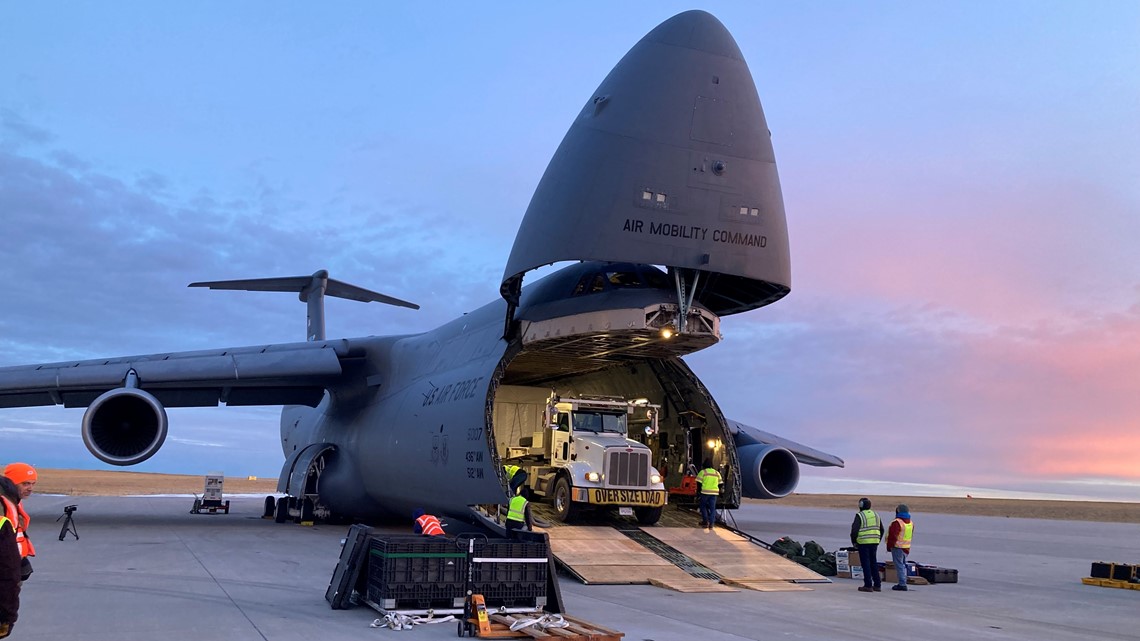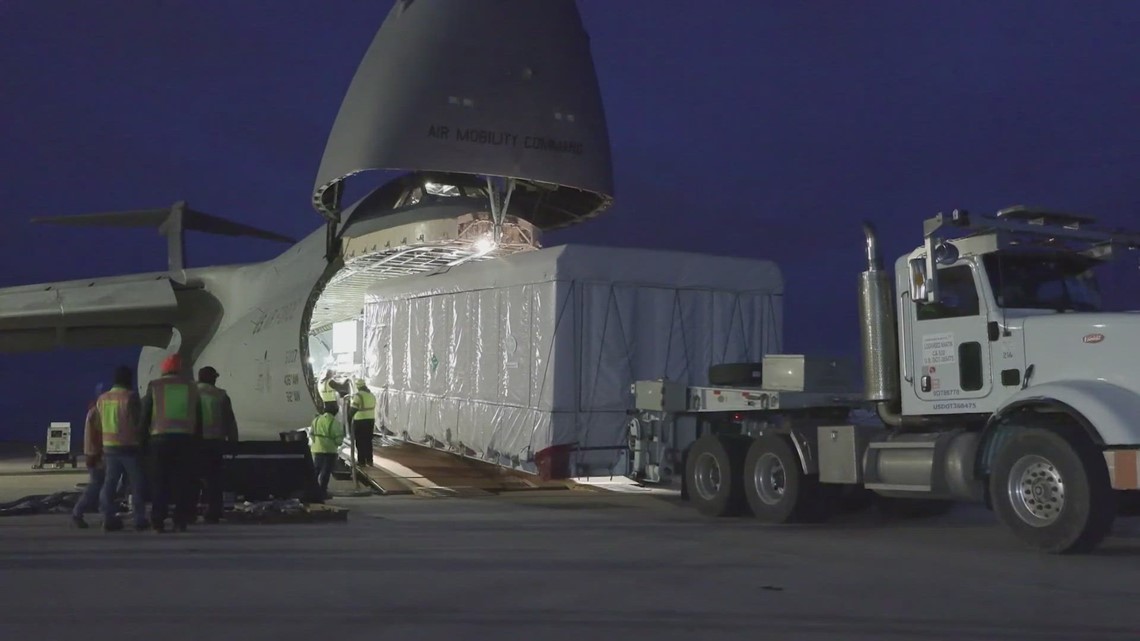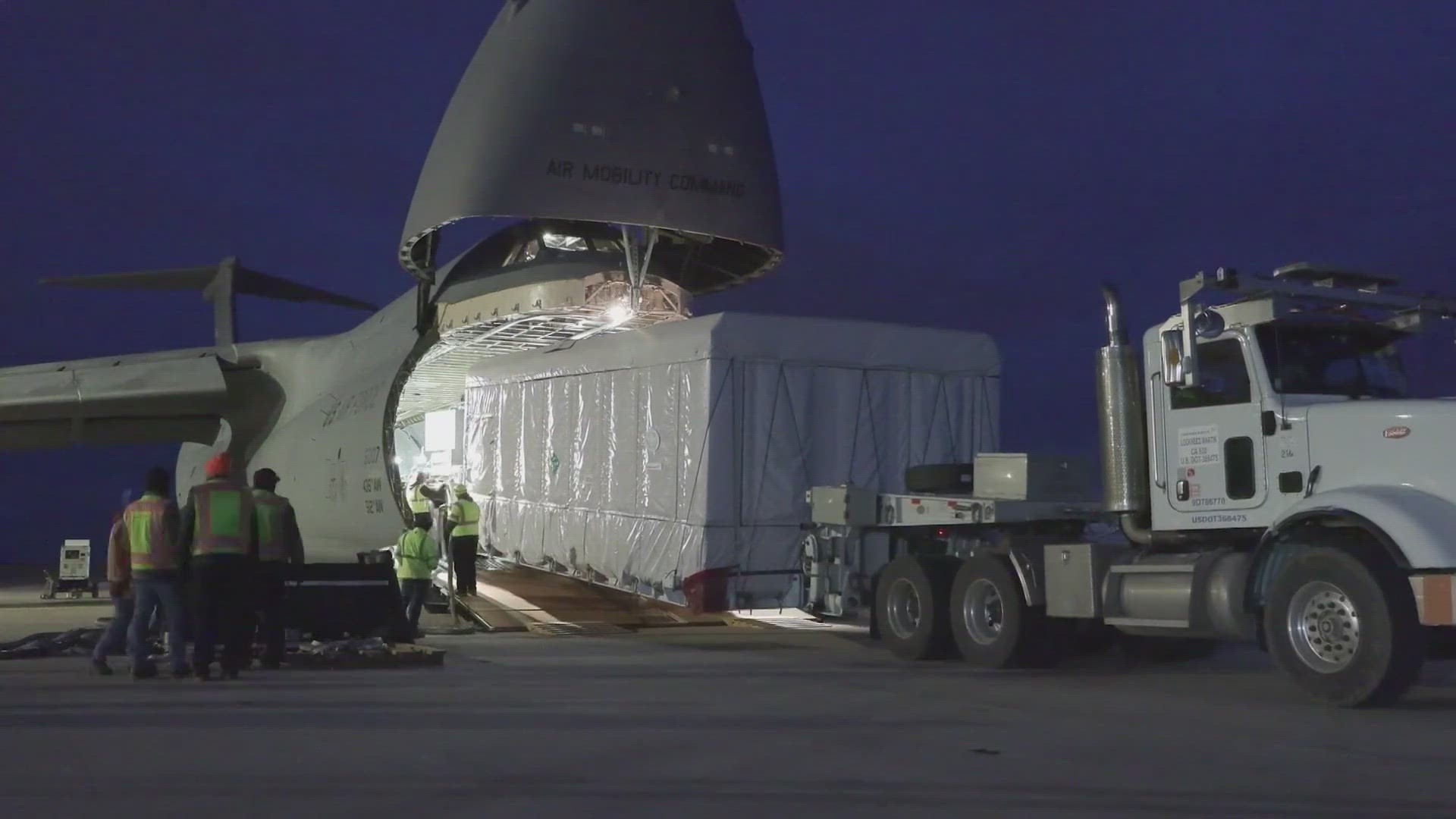AURORA, Colo. — A series of satellites built in Colorado by Lockheed Martin has been the backbone of weather and climate science since 2016, and the fourth and final member of the group will soon join the other three in geostationary orbit above the Earth.
The Geostationary Operational Environmental Satellites (GOES) act as eyes in the sky for meteorologists. They are actually positioned 22,000 miles above the Earth in geostationary orbit, which means they are locked into their position in space and circle in synchronicity with a certain point on the planet.
While the first generation of GOES weather satellites launched in 1975, the four that will be used by meteorologists over the next 10 years are actually the fifth generation.
The National Oceanic and Atmospheric Administration (NOAA) currently has two operating GOES over the United States. GOES-16, launched in 2016, is located towards the east coast and GOES-18, launched in 2022, is over the west. GOES-17, launched in 2018, is turned off but is being kept in a backup orbit.
The plan for the satellite that will become GOES-19 once it reaches space, is to replace GOES-16 in the east coast position and have GOES-16 moved to a storage orbit. That would leave GOES-18 and GOES-19 as the two operational satellites.
Ready for launch
The fourth GOES began assembly in 2019 but is finally ready for its trip to space.
On Monday, Lockheed Martin engineers helped load the spacecraft onto a C5 Galaxy transport jet at Buckley Space Force Base. It’s bound for Kennedy Space Center for a hopeful launch date on April 30.
Once it reaches Florida on Tuesday, it will start another series of testing which normally takes about three months to complete.


The satellite, which is about the size of a school bus, was transported from the Lockheed Martin facility in Waterton Canyon by a police escort before dawn. It's sealed in a giant white box which is actually a clean room on wheels.
Engineers want to make sure that the sensitive instruments on the satellite, like its sophisticated camera called the Advanced Baseline Imager, don't end up with any particles obstructing their ability to function. Even the smallest hair or piece of dust could corrupt the data that GOES sends back, and it's a little hard to wipe a lens clean when it's 22,000 miles away.


The GOES track record
When the first GOES in this generation was launched in 2016, scientists said the instruments were going to revolutionize weather and climate science.
"They've done their jobs and then some," said NOAA scientist Dan Lindsay. "There are a lot of things we can do now that we weren't able to do before this series of satellites came online."
He said he uses the GOES satellites that are already in space every day and that their weather and climate monitoring has already saved countless lives with advancements in real-time storm analysis as well as forecasting.
"Better data means better modeling which leads to better warnings," he said. "And instruments like the lightning mapper have been game-changing in analyzing severe weather as it happens."
The satellites have also been valuable in wildfire detection and tracking.
“The fires are getting worse and worse every year, especially in the western U.S.," said Lindsey. "So, it’s really important to monitor those fires. Not only the hot spots but we also monitor the smoke.”
This generation of GOES has also played a crucial role in studying and forecasting space weather. And this fourth member of the GOES family has a new sensor called the Compact Coronagraph which could advance the capabilities of forecasting solar storms.
“Whenever there's something like a coronal mass ejection or a solar flare, we'll be able to detect it as it moves away from the sun and through the Corona and get a better idea of where it's heading and how fast it's moving.”
The next generation
The life expectancy of these GOES satellites is about 10 years, so they are expected to carry weather forecasters into the 2030s. But NOAA is already working on their replacements which will be called the Geostationary Extended Observation satellites (GeoXO), but it’s not yet known if those will also be built in Colorado.
SUGGESTED VIDEOS: Latest from 9NEWS

